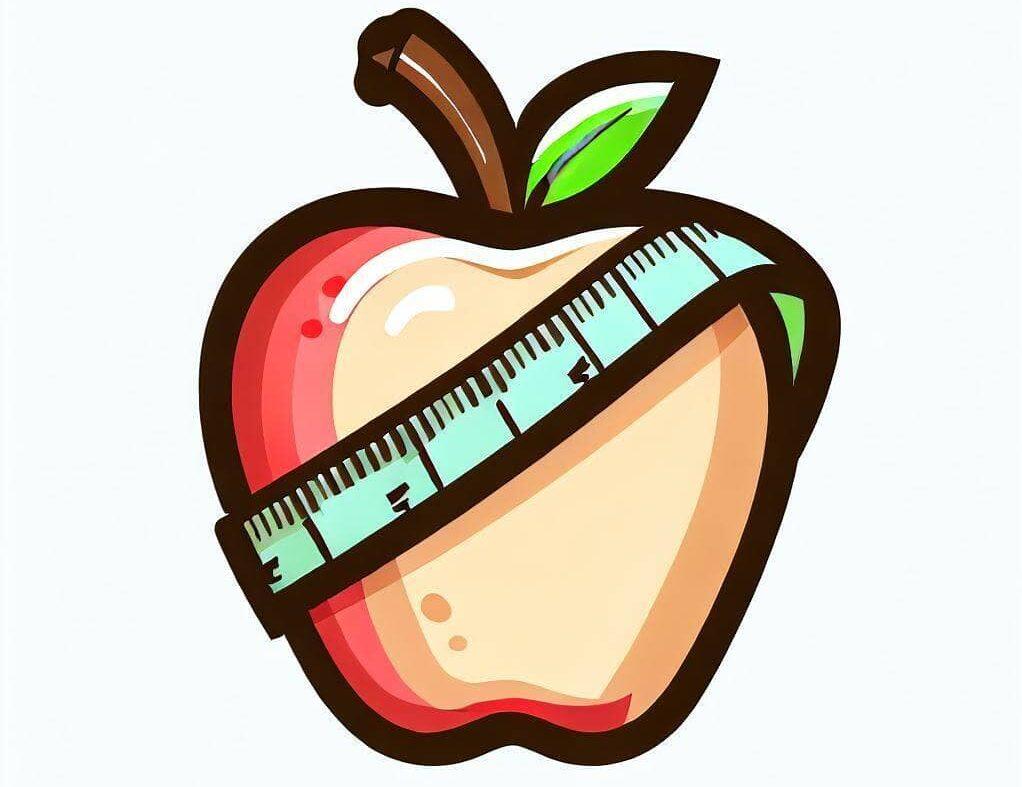Best Time to Eat Pasta for Weight Loss
This post may contain affiliate links which means I may receive a commission for purchases made through links at no extra cost to you. See my disclosure policy for more information.
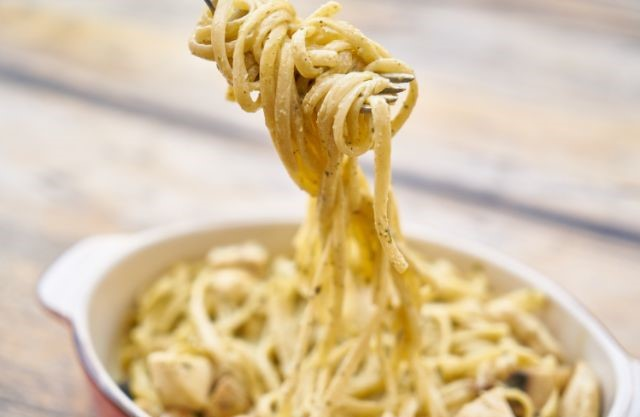
Everyone loves pasta. As a nutritionist, I get a lot of questions about whether is pasta good for weight loss or when should you eat it, or if should you eat it at all.
Today I decided to go ahead and answer them once and for all. What exactly is the best time to eat pasta? Let’s dive right into it.
What’s the Best Time to Eat Pasta for Weight Loss?
Given the body’s natural circadian rhythm and the fact that most people are most active during the day, the morning or afternoon is the best time to eat pasta.
Having pasta at lunch provides you with a substantial source of energy to use throughout the rest of the day.
In contrast, having a large pasta meal later in the evening, when you’re likely to be less active and your body doesn’t need as much energy, could result in an excess of unused calories.
These extra calories could potentially be stored as fat, making weight loss more challenging.
Why Timing Matters for Pasta and Weight Loss?
It all starts with your body’s internal clock or circadian rhythm. This 24-hour internal clock regulates almost everything your body does throughout the day and night, including digestion, metabolism, and even how your body uses and stores energy. Cool, right?
Now, imagine this. It’s lunchtime, and you decide to have a delicious whole-grain pasta dish. Since it’s the middle of the day when you’re likely to be active, your body uses those pasta carbs to fuel your activities – from powering through an afternoon workout to simply going about your daily tasks.
But here’s the twist. Let’s say instead of lunch, you decide to have that pasta dish for dinner, close to bedtime. At night, your activity levels typically drop (you’re not running around, you’re probably chilling on your couch, watching your favorite show, or getting ready to hit the sack). As a result, your body doesn’t need as much energy.
What happens to the energy from that pasta dish? Well, if it’s not needed, the body might store it for future use. In other words, it could end up as stored fat. This is why many nutritionists suggest eating your largest meals earlier in the day when your body needs more fuel, and lighter meals in the evening when energy needs are lower.
But don’t freak out – this doesn’t mean pasta is off-limits for dinner. You can still enjoy pasta at night, just keep your portions in check and opt for more complex carbs like whole grain pasta which take longer to digest and keep you feeling full for longer.
Eating Pasta for Breakfast
Let’s start with the bright side: Having pasta for breakfast gives your body a robust source of energy to kickstart your day.
As we said before, pasta is packed with carbohydrates that are broken down into glucose, our body’s go-to energy source.
Eating pasta in the morning is like filling your car with gas before a road trip; you’re fueling up when your day’s journey (activities) is just about to begin.
Furthermore, having a satisfying breakfast that includes foods you love, like pasta, might also prevent overeating later in the day.
When you start your day feeling satisfied, you’re less likely to binge on unhealthy snacks or overeat at lunch.
But now for the flip side. The catch here is that most traditional breakfast pasta dishes can be high in calories and lower in other essential nutrients like protein and fiber.
If your morning pasta dish is more like a heaping plate of spaghetti carbonara and less like a small serving of whole-grain pasta with veggies and lean protein, you could be starting your day with more calories than you need, which could potentially lead to weight gain over time.
Eating Pasta for Lunchtime
Picture this: It’s midday, you’ve had a busy morning, and you’re getting pretty hungry. Is this a good time to dig into a pasta dish? The answer is a resounding yes! Here’s why.
Your body, in its wonderful complexity, is a dynamo of activity during the daytime, juggling work, movement, cognitive tasks, and more.
All these activities require energy, and that’s where your pasta comes in. Consuming pasta at lunch provides your body with ample carbohydrates to continue powering through your day’s tasks efficiently.
Plus, the right pasta lunch can also keep you feeling full and satisfied until dinner, preventing late-afternoon trips to the vending machine or unhealthy snack binges.
Just remember to stick to whole-grain pasta, and jazz it up with plenty of veggies and lean protein to make a balanced, nutritious meal.
Eating Pasta for Dinner
So, we’ve made it to the end of the day. You’re winding down, and your day’s activities are drawing to a close. Is this the right time to enjoy a pasta dish? The answer might not be what you hope for.
As night falls, our body, in sync with the rhythm of the day, starts to slow down its functions. The heart rate drops, the muscles relax, and the brain begins to unwind.
With this slowdown, the body’s energy needs decrease. Eating a heavy pasta dinner at this time might result in an energy surplus – that’s like pouring fuel into a car that’s done driving for the day and is just parked in the garage.
What happens to the extra fuel? It gets stored, and in the body’s case, as fat.
However, this doesn’t mean pasta is completely off the menu for dinner. It’s all about finding the right balance.
Opt for smaller portions, and choose whole-grain pasta over white pasta. Pair it with plenty of vegetables, healthy fats, and a lean protein source, and you’ve got yourself a dinner that’s satisfying but won’t tip the energy balance scale toward weight gain.
Also read: Best Time to Eat Dark Chocolate for Weight Loss
The Best Pasta Types for Weight Loss
Pasta, a comfort food loved worldwide, often gets a bad rap when it comes to weight loss. But it’s not all doom and gloom for pasta lovers on a weight loss journey.
The trick lies in choosing the right kind of pasta.
Let’s take a closer look at the best pasta types for weight loss, making sure to keep things as simple as possible.
Whole Grain Pasta
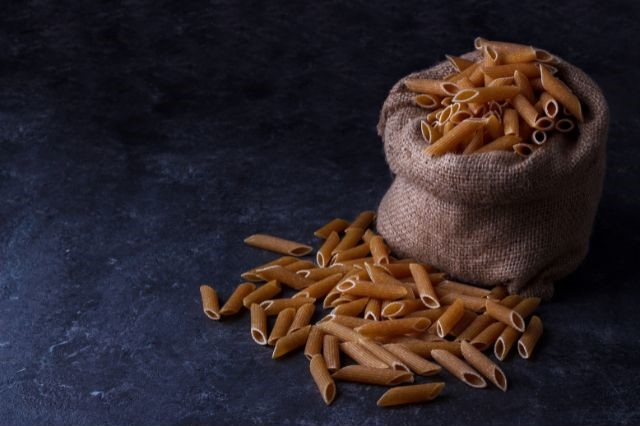
If pasta is your go-to comfort food, you might want to explore the world of whole-grain pasta. Whole grain pasta, which includes brown rice pasta and whole wheat pasta, is like the superhero version of traditional pasta.
It’s made from the entire grain – that means the bran, germ, and endosperm are all included.
Why does this matter? These parts of the grain are rich in fiber, a nutrient known for promoting feelings of fullness.
By eating more fiber-rich foods like whole-grain pasta, you can feel satisfied longer, reducing the chance of overeating.
Also, remember the glycemic index (GI)? Whole-grain pasta has a lower GI compared to its refined counterparts.
This means it doesn’t cause a rapid spike and crash in your blood sugar levels, keeping you energized and satisfied for longer while also containing fewer calories.
Zucchini Noodles
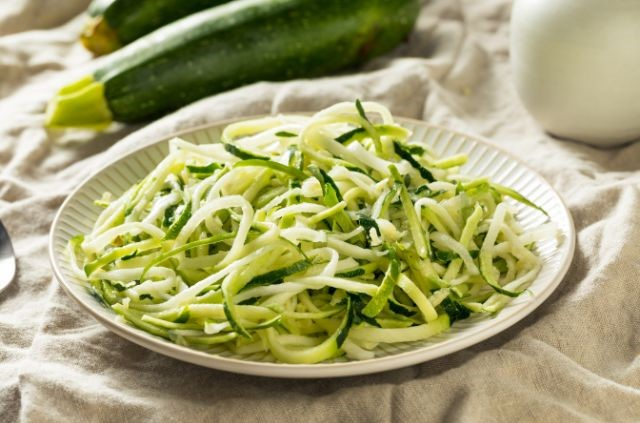
Now, let’s turn our attention to zucchini noodles, or ‘zoodles’ as they’re affectionately known. They’re made by spiralizing zucchini into long, noodle-like strands.
Zoodles are an excellent low-calorie and low-carb alternative to traditional pasta. They’re high in water and fiber, both of which can help you feel full and satisfied without a load of calories.
Plus, they’re an easy way to sneak in an extra serving of veggies into your diet.
Quinoa Pasta
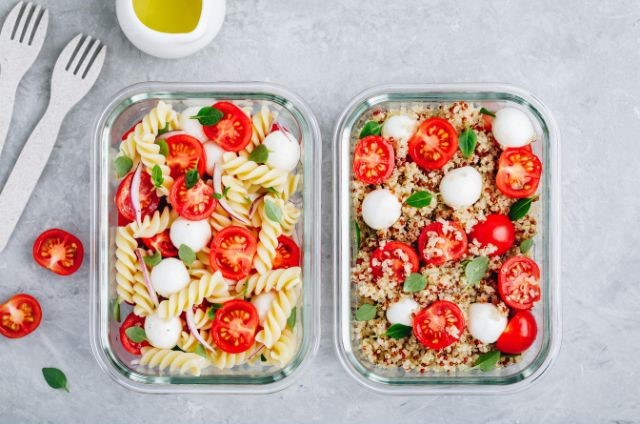
Quinoa pasta, made from quinoa grains, is another great choice for those aiming to lose weight. Quinoa is known for its high protein content, which can help you feel fuller longer.
This pasta can be a beneficial addition to a balanced meal, especially if you’re trying to increase your protein intake.
Also read: Are Protein Pancakes Good for Weight Loss?
Easy Pasta Recipes Under 500 Calories For Weight Loss
Trying to lose weight but still craving pasta? No worries! Here are some simple, delicious pasta recipes that come in under 500 calories. These dishes give you the best of both worlds – the comfort and satisfaction of a pasta dish, but without the extra calories that can hinder your weight loss journey.
1. Whole Wheat Spaghetti with Marinara and Grilled Chicken
Ingredients:
1 cup of cooked whole-wheat spaghetti
1/2 cup of marinara sauce
3 ounces of grilled chicken breast
2 tablespoons of grated Parmesan cheese
Mixed herbs and spices (basil, oregano, garlic powder) to taste
Instructions:
Cook the spaghetti according to the package instructions. Drain and set aside.
While the spaghetti cooks, grill your chicken breast until thoroughly cooked. Slice into thin pieces.
Heat the marinara sauce in a saucepan over medium heat. Add herbs and spices to taste.
Toss the spaghetti in the sauce until well coated. Top with sliced grilled chicken and Parmesan cheese.
2. Zucchini Noodles with Olive Oil and Garlic
Ingredients:
2 medium zucchinis
2 tablespoons of olive oil
2 cloves of garlic, minced
A pinch of red pepper flakes
Salt and pepper to taste
Instructions:
Using a spiralizer, turn your zucchinis into noodles (zoodles). If you don’t have a spiralizer, you can use a vegetable peeler to create thin ribbons.
Heat the olive oil in a large skillet over medium heat. Add the garlic and red pepper flakes and cook until fragrant.
Add the zucchini noodles and cook, stirring occasionally, for about 2-3 minutes, until the zoodles are tender but still crisp. Season with salt and pepper to taste.
3. Quinoa Pasta Salad with Veggies and Vinaigrette
Ingredients:
1 cup of cooked quinoa pasta
1 cup of mixed veggies (think bell peppers, cherry tomatoes, cucumbers)
2 tablespoons of your favorite low-fat vinaigrette
Mixed herbs (parsley, dill) to taste
Instructions:
Cook the quinoa pasta as per package instructions. Drain and set aside to cool.
In a large bowl, mix the pasta with the veggies.
Drizzle with vinaigrette and toss until everything is evenly coated. Sprinkle with mixed herbs.
Also read: Are Rice Noodles Good for Weight Loss?
Healthy Pasta Alternatives for Each Meal
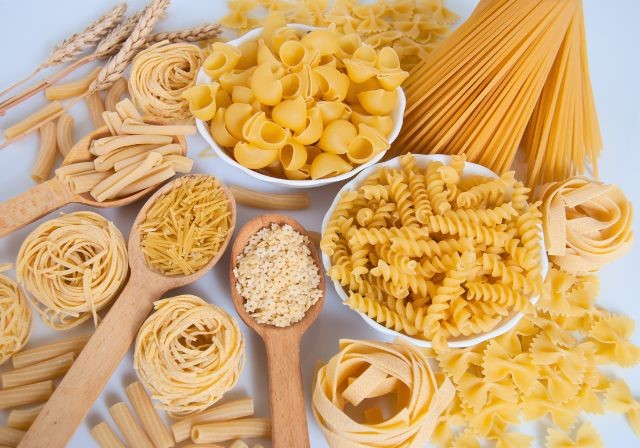
If you’re trying to slim down, yet can’t imagine life without pasta, don’t despair! You can have your pasta and eat it too, with just a few tweaks. Let’s go through some healthy pasta alternatives that will let you enjoy your meals guilt-free.
Breakfast – Sweet Potato Pasta
Let’s start the day bright and sunny with some sweet potato ‘pasta’. Yes, you heard that right! Sweet potatoes can be spiralized into noodles and make a surprisingly delicious breakfast.
Toss them in a pan with a bit of olive oil, salt, and pepper.
Add a dash of cinnamon for a sweet twist, and pair it with scrambled eggs for a power-packed breakfast. It’s a fantastic way to sneak in some veggies early in the day.
Lunch – Whole Grain Pasta
Come lunchtime, it’s great to have something substantial. Whole-grain pasta, like brown rice pasta or whole wheat pasta, can be a fantastic option.
It’s higher in fiber and will keep you feeling full longer than traditional pasta. Toss it up with some lean protein like grilled chicken and a rainbow of veggies for a filling, balanced meal.
Dinner – Zucchini Noodles (Zoodles)
Dinner time rolls around, and you’re craving something light yet satisfying.
Enter zoodles! Zucchini noodles are not only lower in calories and carbs than traditional pasta, but they also add an extra serving of vegetables to your day.
Pair them with a lean protein source like grilled shrimp and a tomato-based sauce for a light, yet satisfying meal.
Snack – Chickpea Pasta
Feeling peckish between meals? Chickpea pasta can be your go-to snack. This pasta is high in protein and fiber, both of which can help tide you over to your next meal.
Make a small serving of chickpea pasta salad with some olive oil, lemon juice, and your favorite crunchy veggies for a healthy and satisfying snack.+
Also read: Best Energy Drink for Weight Loss
Conclusion
Timing matters; aim for pasta meals earlier in the day when your body needs more fuel, and go lighter at night. Opt for healthier alternatives like whole grain or vegetable-based pasta, and keep those portions in check.
Remember, it’s not just about that one pasta dish, but your overall diet and lifestyle. Balance is key, and every meal is an opportunity to nourish your body.
Enjoy your food, maintain a consistent workout routine, and above all, keep things interesting – variety is the spice of life, after all!
FAQ
Is pasta good for losing belly fat?
No, pasta itself does not directly contribute to losing belly fat. However, whole grain pasta as part of a balanced diet and active lifestyle can support overall weight loss, which includes losing belly fat.
Is it better to eat pasta at lunch or dinner?
Generally, it may be better to eat pasta at lunch when your body needs more energy for the day’s activities. Eating a heavier pasta meal at dinner, especially close to bedtime, might result in unused calories that could contribute to weight gain.
What time should you not eat pasta for weight loss?
You should aim to avoid eating pasta late in the evening or near bedtime, particularly if it’s a large portion or high in calories. This is due to reduced activity levels and energy needs during the night.
How much pasta should I eat a day to lose weight?
The amount can vary based on individual calorie needs and diet plans. However, as a guideline, a single serving of cooked pasta is usually about one-half cup, which can be included in a balanced meal with protein and vegetables. Always consult a nutritionist or healthcare provider for personalized advice.
This post may contain affiliate links which means I may receive a commission for purchases made through links at no extra cost to you. See my disclosure policy for more information.
Rahul is a professional nutritionist certified by the International Sports Sciences Association (ISSA) and a personal trainer certified through the American Council of Exercise (ACE). He has a special interest in the science of nutrition and how it can impact the body.
